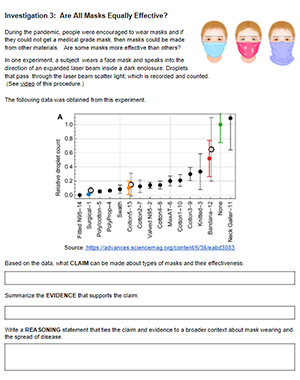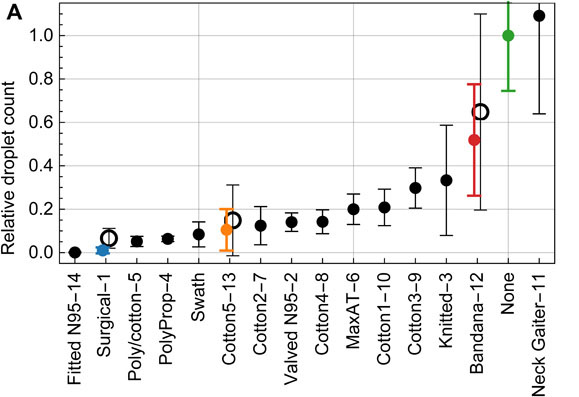
I created this activity based on misinformation being shared on social media. In some places, mask wearing became a source of conflict, with some people claiming that masks did not work or could even cause harm.
In each case, students identify a claim, summarize evidence, and then complete a reasoning statement that ties the data to the larger context on mask wearing. I tried to address some of the major misconceptions about mask wearing. Even when the pandemic is over, students can benefit from understanding why doctors wear masks.
I intended this activity for my AP Biology class, where the first lessons of the year are devoted to scientific method and reasoning. I have several CER exercises and try to use actual data from peer-reviewed journals, like this one on cats falling out of windows. Students use CER’s throughout the year to summarize results of experiments or to analyze scientific claims.
I included three different experiments and data sets in this exercise, but may not do them all at once. You could easily split them into several days or just choose one as an example.
Claims and Data Sets
The first data set came from a twitter post where a doctor showed bacteria growth on a petri dish after he performed activities, like talking and coughing. Bacteria growth on the plates where he wasn’t wearing a mask is much greater than growth on the other plates. I didn’t include much regarding the difference between viruses and bacteria, but this could be added as a class discussion.
In the second claim, students collect their own data using a pulse oximeter. They address the claim that masks are harmful because they reduce oxygen levels. Students design an experiment (with some guidance) where they compare the oxygen levels of subjects wearing masks to those without. This may be difficult to do in some cases, and if mask mandates are still in effect, you can instead, share data from scientific journals that show the masks do not decrease oxygen levels.

In the third investigation, students look at the effectiveness of different types of masks, like the N95 or cotton masks. In this experiment, scientists used a laser to measure droplet spread when a person was talking. The graph from the experiment indicates differences in the types of masks and how many droplets were observed. Students would then need to tie the evidence (droplets) to mask effectiveness and disease spread.
Finally, students synthesize the data and evidence from all the experiments to write a response to someone who believes that wearing masks are harmful and ineffective.

